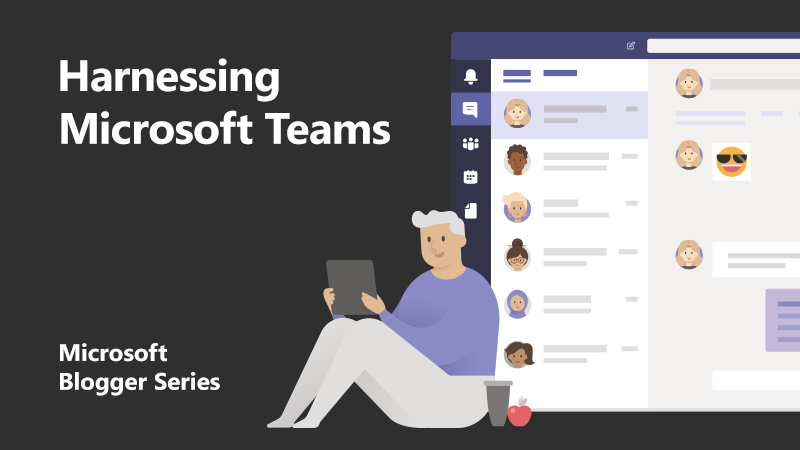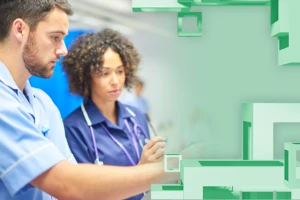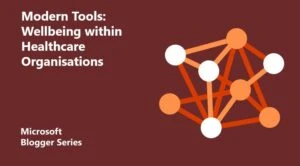
How Microsoft Teams can help higher education students take control of their learning
Using technology in the classroom can sometimes be daunting. But we need to equip students with the fundamental skills they will need to succeed in the workplace of the future such as collaboration and communication. If done correctly, we can use technology-enabled learning to address key challenges that teachers face in higher education:
- Developing learner autonomy
- Facilitating effective group collaboration
- Developing students’ digital skills in preparation for the workplace
Microsoft Teams provides a digital space that brings conversations, content, assignments, and apps together, enabling students to take full control of their own learning. Accessible from any device, Teams is easy to use and encourages collaboration between teachers and students.
Facilitating different learning styles
At UCLan we split students into two separate groups to explore the different ways they could use Teams to engage in effective collaboration. We wanted them to evolve from simply being consumers of learning content, to actively engaging with and creating content themselves.
The timeline below shows how these students utilised Teams over the course of 8 weeks to effectively prepare and engage in live assessed debates. Group A used Teams to prepare for the debates, whereas Group B used Teams during the assessment itself.
Week 1 – Building confidence with Microsoft Teams
The focus of the first week was primarily to introduce students to Microsoft Teams for the first time. In initial workshop activities, we build the student’s confidence with using Teams. These activities involved students posting and commenting on relevant articles and news stories to generate discussions with their Module Leader and other students.
Weeks 1-5 – Introducing the assignment
Students were briefed on the Assessed Group Debate, which was being held at the end of the learning syllabus. We gave the students full autonomy to organise and manage themselves. They chose their co-workers, topic, and debate format with a deadline of confirming these by the end of Week 5.
Week 6 – Group A create a Team autonomously
Having self-organised and submitted their topics and debate format, Group A create their own Team to enable them to discuss, edit, and share an up-to-date copy of their presentation. The Module Leader was also added as a member by the students so they could help or advise students if they needed it.
Week 6-8 – Group A use their Team as a central hub to communicate and prepare
In preparation for the assessed debate, Group A used their Team extensively over the next two weeks for collaboration, file sharing, and formative feedback from the Module Leader. In this particular example there were 32 student-to-student interactions, and 13 student-to-Module Leader interactions.
Week 8 – Assessed debates
As students arrived to watch the assessed debate, Group B added them all as members to a Teams site that they had specifically created for the debate. During the debate, they encouraged the audience to post questions which Group B responded to live in the moment. This innovative practice was praised by staff and co-students. It was highlighted in the Module Leader Report and provides an example of good practice for future students to follow.
Enhancing learning experiences
The impact of these examples can be explained in two ways. Firstly, we found the students’ learning experiences were significantly enhanced as a result of these autonomous approaches. Secondly, they have had a positive impact on the associated staff.
In a module evaluation, students were asked to comment specifically on whether Microsoft Teams was useful in their learning on the module.
Feedback was overwhelmingly positive. Teams was described as “easy to use”. It also “helped with planning the structure of the assignment, with staying in touch, and allowed us to send and save work to proceed with the assignment.”
One student said it “helped in terms of the debate as it allowed groups to communicate together and with other groups and the lecturer.” Incidentally, both Group A and Group B achieved first-class grades for this assessment.
Most importantly, Teams provided a platform on which students could shift from consumer to creator of learning and assessment content. They did so in an authentic and organic manner that suited their individual learning style.
Find out more
From consumers to creators: developing learner autonomy using Microsoft Teams
9 ways to transform the student learning experience with Microsoft Teams
About the authors
Andrew Sprake is a Lecturer in Sport and Physical Education in the School of Sport & Health Sciences at UCLan. He teaches physical education philosophy and practice and the sociology of sport and physical education. He is particularly interested in the pupil-voice. He is an MIE Expert and recently presented at the 2019 BETT show in London, using Microsoft Teams to address the question: How can we enable and empower student voice?
 Jess Macbeth is a Senior Lecturer and Research Degree Tutor in the School of Sport & Health Sciences at UCLan. She teaches the sociology of sport and physical education, with a particular interest in disability sport. She is an MIE Expert and recently presented on Preparing Modules for Teams Delivery at the Keele Digital Festival 2019.
Jess Macbeth is a Senior Lecturer and Research Degree Tutor in the School of Sport & Health Sciences at UCLan. She teaches the sociology of sport and physical education, with a particular interest in disability sport. She is an MIE Expert and recently presented on Preparing Modules for Teams Delivery at the Keele Digital Festival 2019.





